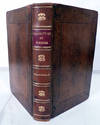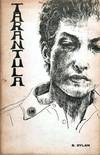
Monalosphaerium, partíbus constans quatuor. Prima, generalis horarii et structuram, et usum, in exquisitam monalosphaerii cognitione praemittit. Secunda, mobilium solennitatum, criticorumque dierum rationes, multa brevitate complectitur. Tertia, quascumque ex motu primi mobilis depromptas utilitates elargitur. Quarta, geometricam praxin breviusculis demonstrationibus dilucidat. Haec sanè cumcta excutit monalosphaerium: quorum capita subsequentes facies ostentat. Parisiis, in aedibus Simonis Colinaei, 1526. RELIE AVEC (à la suite): 2). (du même). Cosmotheoria, libros duos complexa. Prior, mundi totius et formam et compositionem: eius subinde partium (quae elementa et caelestia sunt corpora) situs et magnitudines: orbium tandem motus quosuis solerter reserat. Posterior, ex motibus, siderum loca et passiones disquirit: interspersis documentis haud poenitendum aditum ad astronomicas tabulas suppeditantibus. Haecque seiunctim tandem expeditem praebet Planethodium. Cuique capiti, perbrevia, demonstrationum loco
by FERNEL (Jean)
- Used
- Hardcover
- first
- Condition
- See description
- Seller
-
Barcelona, Barcelona, Spain
Payment Methods Accepted
About This Item
4 works in 1 volume, folio. 1). 6 leaves. 36 numbered leaves. 2). 6 leaves. 46 numbered leaves. 3). 2 leaves. 142 numbered leaves. 1 leaf. 4). 8 leaves. 133 numbered leaves (i.e. 135). 1 leaf. Later vellum, title inscribed in letterprint on the spine. Precious collection of four scientific works of the Renaissance on cosmography, mathematics and astronomy. 1). First Edition of the first book of Jean François Fernel (1497-1558), who had spent some time studying mathematics and astronomy before dedicating himself to medicine, a discipline in which he became famous. It's a treatise on the movement of celestial bodies where the author describes in particular an instrument invented by himself and a method to represent a whole sphere in a single flat drawing. It also contains numerous astrological observations. 2). First Edition (second issue with the title dated 1528), much rarer than his preceeding work, in which the author describes in particular the empirical method he had used to measure a degree of the meridian, by counting the wheel turns he needed to go from Amiens to Paris. "In 1527 he published his first book, Monalosphaerium, which was followed in 1528 by Cosmotheoria, both of them mathematical and astronomical. At the time, astrology occupied an important position in mathematics and astronomy: the Cosmotheoria, however, contained measurements made by Fernel - his estimate of a degree of meridian was good enough to be in close agreement with that of Jean Picard 140 years later and thus was an important contribution to geophysics" (DSB). 3). First Edition. This "treatise of all natural things", dedicated to Charles V and falsely ascribed to an obscure Pompilius Azilius, is in fact the work of the Venitian inventor Giovanni Fontana (1395-1455), a renaissance scholar unfairly ignored by his contemporaries despite his contributions to a wide number of disciplines: hydraulics, mechanics, military equipment, pyrotechnics, cartography, technics for measuring distances and the durations with rockets and clocks, pictural perspective, mnemotechnics, etc. Redacted around 1450, it was published one century later without any improvement and without taking into account the scientific upheavals that had taken place in the meantime, which explains that a number of passages were misunderstood since they were supposed to have been written in the middle of the 16th century. In this work conceived as a great breviary of cosmography, the author deals with the various parts of the world, their order and the location of the unknown lands ("those which are unaccessible to the sight"); the celestial spheres, the movement of planets and their properties; the four elements and related phenomena like winds; the habitable world and its divisions with the influence of heavens depending on longitude and latitude. Lastly, the quantities of elements and marvels of all spheres, minerals, plants and animals. Books III and IV are entirely devoted to the image of the world and its cartographic representation, with many details which make of it one of the most complete sources on the subject before the invention of printing. It contains in particular a complete discussion on the question of antipodes which was shaking the intellectuals and theologians of its time since the first discoveries of the exploration travels in the beginning of the 15th century, "in certain ways the theorical prehistory of the debate which will shake the spirits at the beginning of the 16th century about American Indian belonging to humanity" (Patrick Gautier Dalché). "One of the most interesting features of the 'Liber de omnibus rebus naturalbus' is the geographical knowledge or conjecture which it displays at a time nearly half a century prior to the voyages of Columbus and Vasco de Gama. This is so considerable that a recent sales catalogue, deceived by the supposition that the work was really composed under Charles V, interprets two passages as allusions to America. But the 'terra incognita' to which Giovanni da Fontana refers was neither South nor North America, continents which at that date lay entirely outside his knowledge. He held rather that the Indian Ocean, as we call it, was landlocked, being bounded on the north by India, on the west by Africa or Ethipia, on the East and South by unknown land which, however, was in part accessible and through which there was perhaps a passage" (Thorndyke, who discovered in 1931 who was the true writer of the book). The volume is extensively illustrated with more than eighty wood-engraved sketches inserted into the text, including a world map. A very good copy of this exceedingly rare book. 4). First Edition, posthumous, of one of the most important commentaries on Proclus' "Sphere of the World". Johann Stöffler (1452-1531) teached mathematics at the university of Tübingen where he was notably the professor of Philipp Melanchthon and Sebastian Münster. His commentary on Proclus had a large audience among the astronomers of his time, and it contains two important references on the discovery of America by Colombus (pages 24 and 54). "Offers detailed exegesis and remarkably extensive lists of parallels from ancient, medieval, and contemporary sources. (
) Although designed for students of astronomy, the commentary displays humanist features in its citations from ancient poets and philosophers and in the opening apologia for astronomy based on Aristotelian texts" (Catalogus Translationum et Commentariorum). Paper slightly browned on the first two books (the second one had his margins sometimes folded-in to avoid some woodcuts to be cut-out the binder). A very good copy otherwise. 1). Renouard, p.85 (who lists 13 copies). 2). Renouard, p. 116 (listing only 8 copies of both issues). 3). Cf. Thorndyke, History of Magical and experimental science, IV, 150-180. 4). Sabin, 91983. Catalogus Translationum et Commentariorum, VIII, p.38. Adams F-251; Harrisse (Additions) 84 (containing reference to America in the versified address to the reader by Jehan Le Lieur); Houzeau and Lancaster 3261 and 2406; Renouard Colines, pp.85 and 428 and pp.116-7; Sherrington 1A and 2B.
Reviews
(Log in or Create an Account first!)
Details
- Bookseller
- Comellas Rare Books
(ES)
- Bookseller's Inventory #
- 109066
- Title
- Monalosphaerium, partíbus constans quatuor. Prima, generalis horarii et structuram, et usum, in exquisitam monalosphaerii cognitione praemittit. Secunda, mobilium solennitatum, criticorumque dierum rationes, multa brevitate complectitur. Tertia, quascumque ex motu primi mobilis depromptas utilitates elargitur. Quarta, geometricam praxin breviusculis demonstrationibus dilucidat. Haec sanè cumcta excutit monalosphaerium: quorum capita subsequentes facies ostentat. Parisiis, in aedibus Simonis Colinaei, 1526. RELIE AVEC (à la suite): 2). (du même). Cosmotheoria, libros duos complexa. Prior, mundi totius et formam et compositionem: eius subinde partium (quae elementa et caelestia sunt corpora) situs et magnitudines: orbium tandem motus quosuis solerter reserat. Posterior, ex motibus, siderum loca et passiones disquirit: interspersis documentis haud poenitendum aditum ad astronomicas tabulas suppeditantibus. Haecque seiunctim tandem expeditem praebet Planethodium. Cuique capiti, perbrevia, demonstrationum loco
- Author
- FERNEL (Jean)
- Book Condition
- Used
- Binding
- Hardcover
- Weight
- 0.00 lbs
- Keywords
- SCIENCES;Astronomie;Mathématiques-Géométrie;Illustrés Anciens;Curiosité- Texte curieux;Americana;TOPOGR.-CARTES-GRAVURES;Géographie;Cartographie;Livre en langue latine;
Terms of Sale
Comellas Rare Books
30 day return guarantee, with full refund including original shipping costs for up to 30 days after delivery if an item arrives misdescribed or damaged.
About the Seller
Comellas Rare Books
Biblio member since 2020
Barcelona, Barcelona
About Comellas Rare Books
Founded in Paris, Comellas Rare Books has been dealing with antiquarian books and manuscripts since 1969. In 2001 we settled in Barcelona, Spain, where we happily welcome our visitors by appointment).And in 2021, we opened a second office in Paris (by appointment also).We specialise in rare items in French, Spanish and Latin - with a special emphasis on bibliographic curiosities and unique copies (provenances, annotations, bindings). Subjects of interest include (but are not limited to) early printed books, science, medicine, history of ideas, social sciences, art and literature.Latest acquisitions, catalogue previews and bibliophilic delicatessen of various kinds are available for the registered customers of our four-languages web site www.livres-rares.com
Glossary
Some terminology that may be used in this description includes:
- First Edition
- In book collecting, the first edition is the earliest published form of a book. A book may have more than one first edition in...
- Inscribed
- When a book is described as being inscribed, it indicates that a short note written by the author or a previous owner has been...
- Folio
- A folio usually indicates a large book size of 15" in height or larger when used in the context of a book description. Further,...
- Leaves
- Very generally, "leaves" refers to the pages of a book, as in the common phrase, "loose-leaf pages." A leaf is a single sheet...
- Vellum
- Vellum is a sheet of specialty prepared skin of lamb, calf, or goat kid used for binding a book or for printing and writing. ...
- Spine
- The outer portion of a book which covers the actual binding. The spine usually faces outward when a book is placed on a shelf....







